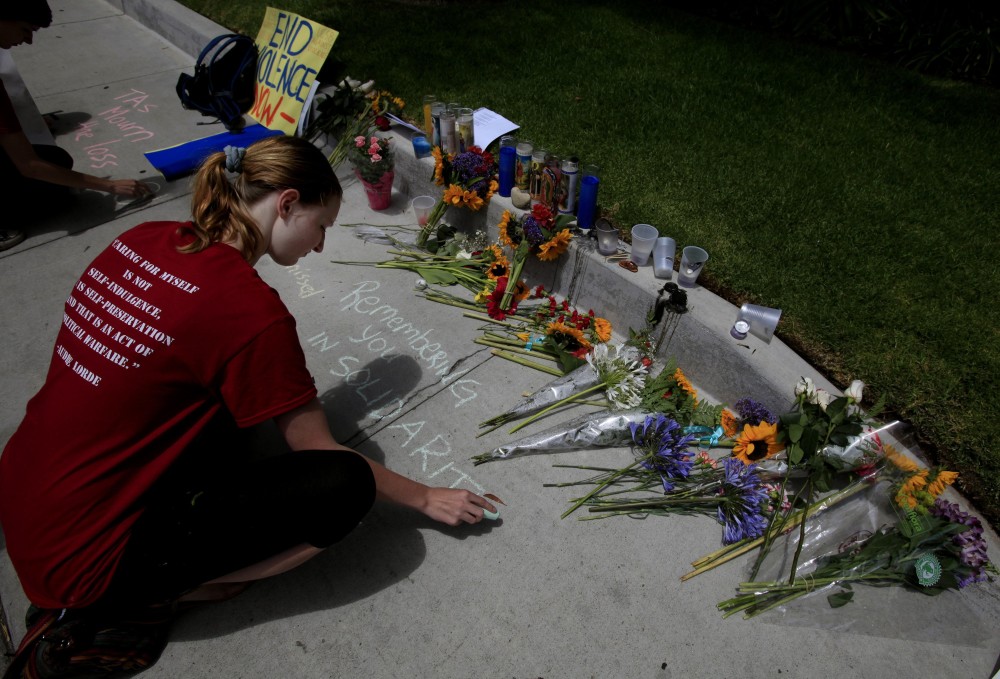EDITORIAL
The Baltimore Sun.
Perhaps someday in the future, forensic psychiatrists and others will analyze the circumstances of last Friday’s mass shooting near Santa Barbara, Calif., from medical records, family interviews and YouTube videos and determine definitively what was going inside the mind of suspected gunman Elliot Rodger.
That he hated women was obviously a significant piece of the puzzle.
Was it that anger that caused him to plan the rampage, post his manifesto on the Internet and ultimately kill six people and injure 13 before killing himself, or was that simply the delusion on which a suicidal 22-year-old became obsessed?
We don’t know. He was a troubled, lonely man with a history of mental illness whose family judged him worthy of an involuntary commitment in a psychiatric hospital, and highly functional enough to avoid it when police came calling.
And while we do not put much stock in the rantings of mass killers, it would be a mistake to ignore the kind of intense misogyny that the gunman spouted.
We are reluctant to quote it directly, and thus give even greater notoriety to his twisted views, but suffice to say that he saw women purely as sex objects, resented that they had rejected his advances and sought revenge by killing them and proving his superiority.
As others have already noted, this sounds very much like the prattle offered by a wing of the men’s rights movement that sees men as victims and disadvantaged by women.
What may have started as a genuine mainstream reaction to feminism and sought equality in child custody, family law or similar legal issues has spawned a radical subset of “pick-up artists” who seek to assert the superiority of the “alpha” male and provoke fear from women.
This kind of misogyny is as much a hate crime as a cross burning on a yard. Yet for some reason, society seems to be more accepting of violence and hatred toward women than it is of violence against ethnic and racial minorities.
Discrimination based on gender provokes more indifference than outrage, the U.S. Senate’s failure to pass an equal pay for equal work law last month at a time when women earn 77 cents for every dollar that men take home represents just one recent example.
Few expect that vote to be a factor in this year’s elections.
Of course, the ill treatment of women is far worse and more widespread than denial of equal pay or employment opportunity.
From rap lyrics to movies and television shows, the torture and abuse of women and the perception that men have been manipulated and used by them is a recurrent theme in popular culture.
It shouldn’t take a feminist to point out that U.S. women are at great risk of becoming victims of violent crime, particularly in the home and at the hands of someone they know.
While men may die from violence more often in the United States, women are five times more likely to be the victim of a violent crime by an intimate partner, more likely to be sexually assaulted and more likely to be stalked, according to U.S. Department of Justice statistics.
A majority of U.S. women say they’ve experienced physical abuse at some point in their lives, most often by an intimate partner and usually a man.
The complaints of an unstable 22-year-old may mean nothing, but the subsequent endorsements of his views on Twitter and elsewhere strongly suggests that his hatred of women, and views of them by narcissistic men as either withholding or promiscuous, are widely shared. That is alarming and ought to provoke a greater uproar than we have so far witnessed.
That Hollywood, supposedly captured by political liberalism, continues to produce and profit from such a volume of “entertainment” that perpetuates this view is certainly troubling.
That elected officials seem so unconcerned about the mistreatment of women, whether through violence or mere discrimination, is obviously far worse.
Misogyny is not just some theoretical problem, some concept to be explored only on college campuses (not coincidentally stuck these days with their own problems with violence perpetrated against women that may have been taken too lightly by authorities).
If the California shooting illustrates nothing else, it is that this virulent hatred and distrust of women is real, widespread and potentially deadly.














































































































































































































































































































































































